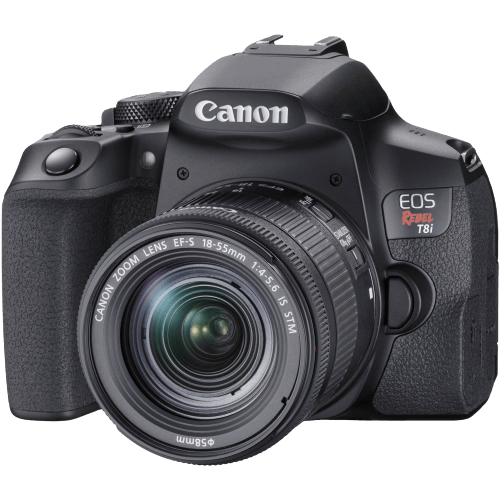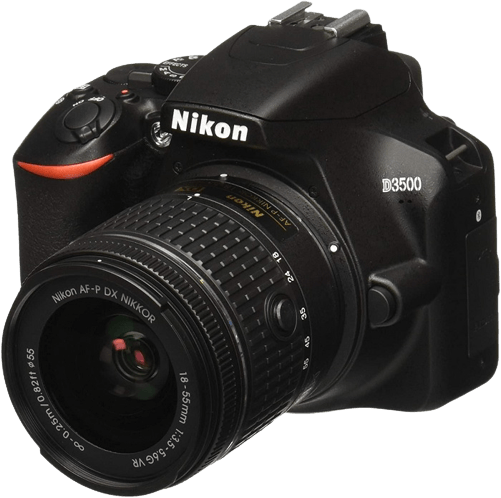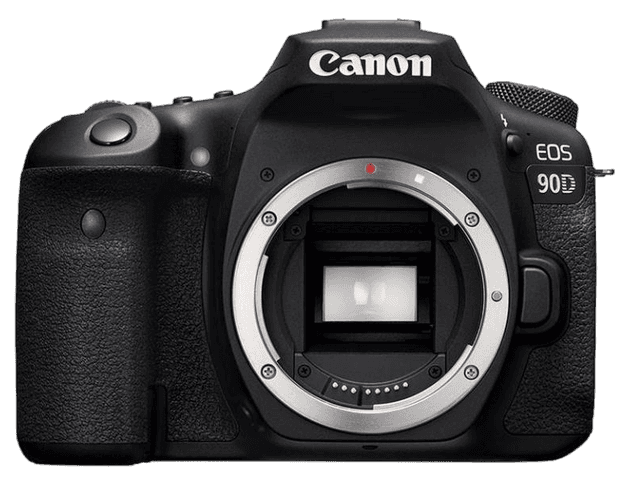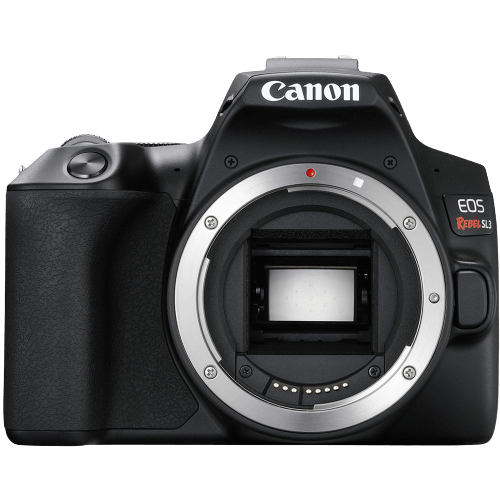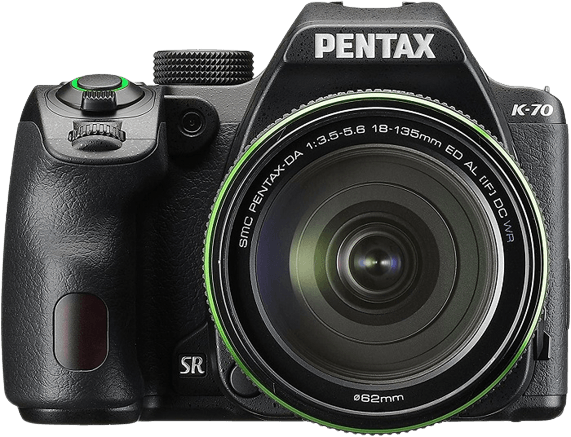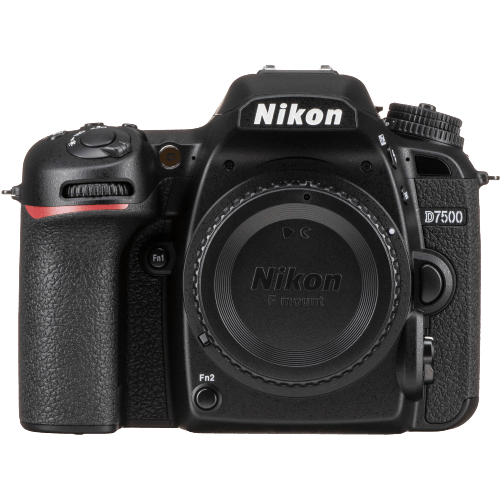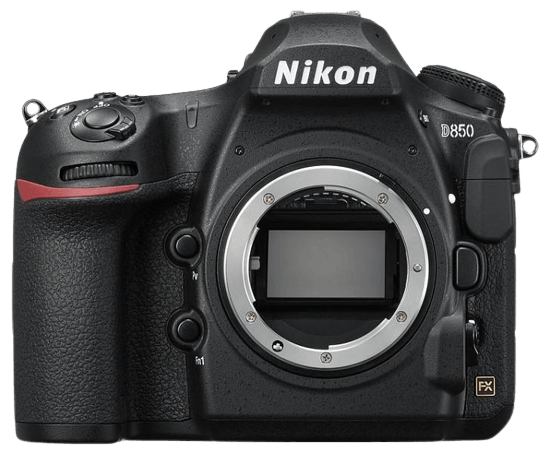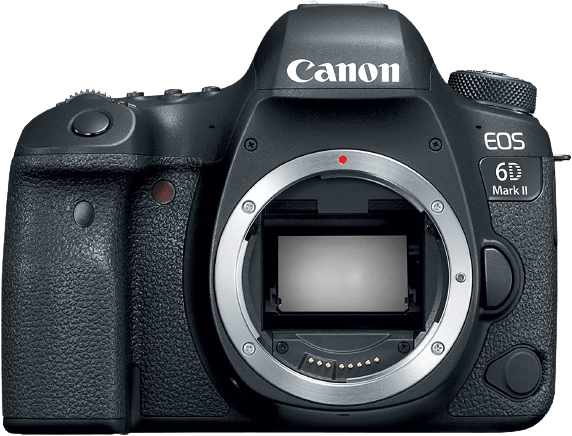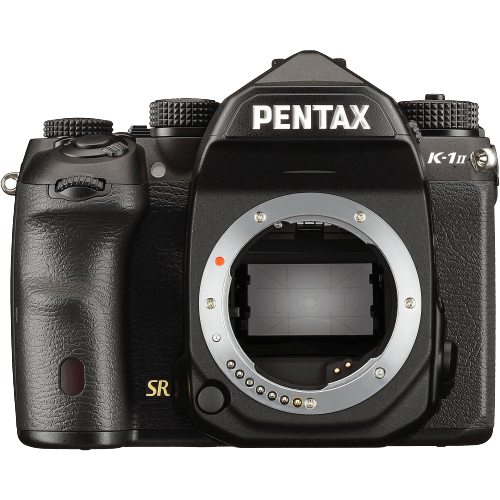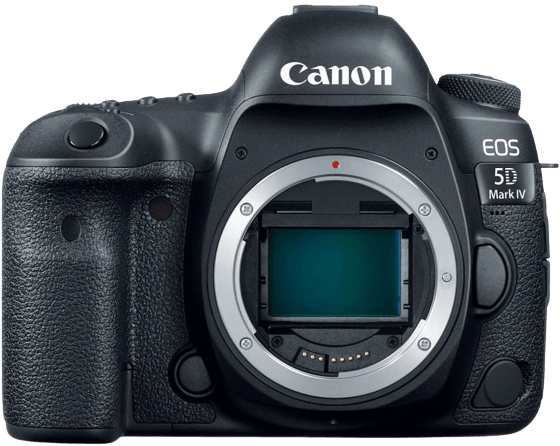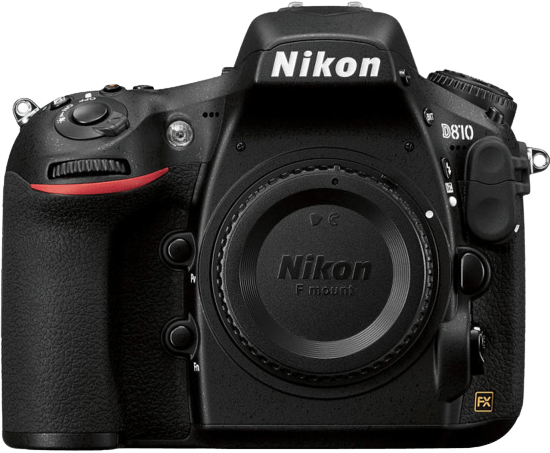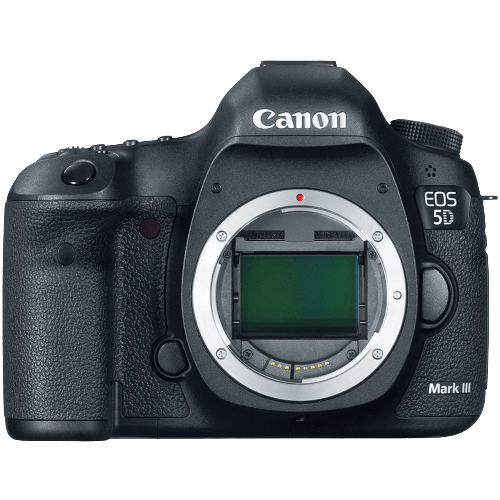The Canon EOS Rebel T8i is our favorite DSLR in 2023. It’s an easy-to-use DSLR that produces excellent images. It has reliable autofocus with subject tracking. And it can shoot glorious 4K video. It’s a brilliant all-rounder for beginners and intermediates. [Note: ExpertPhotography is supported by readers. Product links on ExpertPhotography are referral links. If you use one of these and buy something, we make a little bit of money. Need more info? See how it all works here.]
What Is the Best DSLR Camera in 2023?
DSLR camera remain popular with photographers of all levels. And that’s with good reason. They’re reliable machines. They have excellent photography features. And they consistently produce excellent results. Some DSLRs even shoot excellent video. You’ll see many 4K DSLRs in this list. But you can also see our full list if you want to find the best DSLR for video. With so many quality DSLR cameras to choice from, we’ve broken down our list. This will make it easier to find the best DSLR camera for you. We’ve broken the list into two sections. The first section looks at APS-C (crop sensor) cameras. And the second section has the best full frame DSLR cameras. Check out this article to see the difference between APS-C vs full frame cameras. Use the links below to navigate through the article. Don’t forget to review the buyer’s guide if need more information before you buy.
Best APS-C DSLR Cameras in 2023
This section of the list looks at the best APS-C DSLR cameras. This type of camera is also known as a crop sensor camera. That’s because the sensor is smaller than that of a full frame camera. APS-C DSLRs tend to sit in the entry-level and intermediate user levels. They’re the best place to start for beginners. But the results can be close to professional.
Camera Name Why We Love It Buy From Canon EOS Rebel T8i / 850D Our Top Choice 24.1 MP APS-C CMOS sensor 45-point all cross-type AF system Dual Pixel CMOS AF Full HD 1080p video recording 3.0" vari-angle touchscreen LCD Nikon D3500 Best for Beginners 24.2 MP DX-format CMOS sensor Easily share photos with built-in Bluetooth and Nikon SnapBridge 5 fps continuous shooting 1080/60p Full HD video recording 11-point AF system with 3D tracking Canon EOS 90D Most Powerful APS-C 32.5 MP CMOS sensor Up to 10 fps continuous shooting Dual Pixel CMOS AF for Live View & 4K video Vari-angle touchscreen LCD Built-in Wi-Fi and Bluetooth connectivity Canon Rebel EOS SL3 / 250D Best Entry-Level Canon 24.1 MP CMOS sensor 4K video capabilities Vari-angle LCD touchscreen Dual Pixel CMOS AF Built-in Wi-Fi and Bluetooth Pentax K-70 Best All-Weather APS-C Camera 24 MP APS-C CMOS Sensor Full HD 1080p video recording 6 fps continuous shooting Wide 100-51,200 ISO range Weather-sealed body Nikon D7500 Best for Wildlife Photography Weather-sealed body for outdoor shooting 20.9 MP DX-format CMOS sensor 4K UHD video recording at 30 fps 153-point AF system with 99 cross-type points 10 fps continuous shooting
The Canon EOS Rebel T8i is a great starting place for any photographer. It’s also a great starting place for video makers, vloggers, and live streamers. That’s because the Rebel T8i is packed with multimedia features. And the fact it’s easy to use means anyone can pick it up and start creating.
It has an image resolution of 24.1 MP. That’s really strong for an entry-level camera. And that’s one of the reasons it’s a popular camera with more experienced photographers too. The image quality is excellent. It blows smartphone cameras out of the water. And the images respond well to printing and enlarging.
Video makers will also be excited about the Rebel T8i. You can shoot quality video with a stunning 4K resolution. The 24 fps isn’t the fastest frame rate. But the footage is still excellent for a camera at this level. It also doubles as a webcam. And that’s why it’s made our list of the best streaming cameras.
The reliable autofocus is another top selling point. It uses 45 focus points across the frame, giving you good coverage. It can track subjects as they move within the frame. And you have eye detection features for more accuracy when shooting human subjects.
The Canon EOS Rebel T8i doubles as a webcam. You just need to connect it to a computer and use the Canon EOS Utility software. The camera also has built-in Wi-Fi and Bluetooth. And that makes it easy to share media with other devices. It’s no surprise the Rebel T8i tops the list as the best DSLR camera.
DSLR cameras are a great place to start if you’re new to photography. They are usable, have great features, and produce excellent images. And the Nikon D3500 is the perfect example. It’s the best DSLR for absolute beginners.
The D3500 is easy to use. The fantastic autofocus features make it easy to pick it up and start shooting right away. And the 24.2 MP sensor produces high-quality images that will feed your enthusiasm.
One beneficial feature is using Bluetooth to connect the camera to your smartphone using the Nikon Smartbridge. It allows you to move photos from the camera to your phone. This frees up space on the memory card as you go.
It is limited in some respects. It lacks a burst function, and there is no movable screen for multi-angle shots. But with the Nikon D3500, simplicity is part of the appeal. You can have fun taking pictures without getting lost in the function menu.
The Nikon D3500 is fun to use and affordable. It doesn’t have every function you can think of. And it lags behind the competition on video specs. But it’s a fantastic DSLR for new photographers.
If you’re just starting your photography journey, you check out our Photography for Beginners e-book. It takes you through the basics and gives you the skills you need to succeed with a camera.
When it comes to APS-C DSLRs, the Canon EOS 90D has stolen the show. It has a powerful sensor that beats most other APS-C models. The autofocus is excellent. And the video specs make it one of the best DSLRs for filmmakers in 2023.
The sensor has a resolution of 32.5 MP. That’s impressive for a camera with an APS-C sensor. The images from this camera will knock your socks off. And you don’t lose any quality when shooting with the 10 fps burst mode. Its only weakness is the limited ISO range. But the powerful sensor means you don’t experience much digital noise until you reach the higher end.
It’s not only photographers that love the Canon EOS 90D. Thanks to its 4K uncropped video, videographers and vloggers are raving about it too. You can shoot 4K with a smooth 30 fps frame rate. And there’s a 120 fps frame rate when shooting in Full HD.
The 45-point focus system is great for moving subjects. It tracks them as they move. And you get face and eye detection features. It works well for photography and video shooting.
For quality and functions, you can’t do better than the Canon EOS 90D. It has webcam functionality for live streamers on Twitch or YouTube. And it has built-in wireless connectivity. The price isn’t bad either. It’s the most powerful crop sensor DSLR on the market. Check out our full high resolution camera rundown if you’re looking for more power.
The Canon EOS Rebel SL3 is an older version of the Rebel T8i. But despite its age, it’s still one of the best entry-level DSLR cameras. It’s a reliable camera that produces fantastic images. It has advanced features. And you can even shoot 4K videos. The price makes it an absolute bargain.
The sensor has an image resolution of 24.1 MP. And it’s backed up by the DIGIC 8 processor. It gives you fantastic detail and true-to-life color rendition. It shoots well in low-light conditions. And the dynamic range is surprisingly good. Any photographer would be proud of the images from this camera.
The SL3 has a Dual Pixel CMOS autofocus system. It gives you near-total frame coverage. And it has face and eye tracking. That’s great if you’re shooting portraits or fashion photography.
The 4K video resolution is impressive. The frame rate options are limited and on the slow side. But it beats most of the competition on social media. It also transforms into a high-quality webcam. That means you can use it for conference calls, vlogging, and streaming. Streamers should check out our full list of the best streaming cameras in 2023.
The Canon EOS Rebel SL3 is one of Canon’s smallest DSLRs. That’s a surprise when you consider all the features packed inside. It’s a great camera to pack in your first camera backpack.
Nikon and Canon dominate the DSLR market. But Pentax also produces DSLR cameras worthy of your attention. And the Pentax K-70 is one such camera. It’s reliable, robust, and has some unexpected features. And it produces excellent images. You can’t ask for much more from a camera at this price.
You’ll be impressed with the 24.2 MP image resolution. The pictures are bright, detailed, and vibrant. You also get a super wide ISO range. The lower limit is 100 ISO. This gives you pristine quality. But you can push it all the way to 102,400 ISO. That gives you excellent shooting options in low-light situations.
You might be surprised to learn the K-70 has image stabilization. It has a built-in shake reduction system that keeps your images sharp. It allows you to shoot with slower shutter speeds. That gives you more control over your exposure settings. And it gives better results in low light.
The vari-angle screen helps you shoot from any angle. And the fully weather-sealed body allows you to shoot outside in any conditions. The Pentax K-70 is the most rugged APS-C DSLR there is. Here’s our full list of the best Pentax cameras in 2023.
The Nikon D7500 is a versatile camera that delivers on all fronts. The photography specs are great. And many believe the D7500 outperforms expectations. It also gives you excellent video options. So photographers and videographers can reap the rewards of the Nikon D7500
This camera is a great all-rounder. The resolution of 20.9 MP might seem low for this level, but the image quality is superb. It has an ISO range of 100-51,200 that’s extendable up to ISO 1,640,000. This means the D7500 performs brilliantly in dark conditions.
The 51-point autofocus and 8 fps burst mode make it great for capturing the action. But if that’s not quick enough, you can try the 4K video capture. You can record 4K video at 30 fps. And you get faster frame rate options if you drop down to Full HD quality. You also get a 4K time-lapse video feature built in.
The LCD screen tilts to help you shoot at different angles. And the camera body is completely weather sealed for outdoor shooting. The Nikon D7500 is a fantastic all-rounder. But the features make it a top option for wildlife photography. Animals lovers should check out our full list of best cameras for wildlife photography.
The Best Full Frame DSLR Cameras in 2023
The section looks at the best full frame DSLR cameras. Full frame cameras have higher specifications and more advanced features. So they usually come with a heavier price tag. But full frame cameras are exactly what you need if you’re looking to upgrade.
Camera Name Why We Love It Buy From Nikon D850 Best Nikon for Professionals 45.7 MP full frame sensor Up to 9 fps continuous shooting 4K UHD video recording 153-point AF system Tilting touchscreen LCD Canon EOS 6D Mark II Best Canon for Intermediates 26.2 MP full frame CMOS sensor Powerful DIGIC 7 image processor ISO 100-40,000 (expandable to 102,400) 6.5 fps continuous shooting 45-point all-cross type AF system Pentax K-1 Mark II Best All-Weather Full Frame 36.4 MP CMOS sensor 5-axis shake reduction for sharper images Thorough weather sealing for outdoor photography Full HD 1080/60i video recording Built-in Wi-Fi and GPS Canon EOS 5D Mark IV Best Canon for Professionals 30.4 MP full frame CMOS sensor Up to 7 fps continuous shooting 4K video recording 61-point AF system Dual Pixel RAW support Nikon D810 Best Nikon for Intermediates 36.3 MP FX-format CMOS sensor ISO range of 64-12,800 (expandable to ISO 32-51,200) 5 fps continuous shooting Advanced 51-point AF system Full HD 1080p video recording at 60/50/30/25/24p Canon EOS 5D Mark III Best Budget Full Frame DSLR 22.3 MP full frame CMOS sensor 61-point high-density reticular AF 6 fps continuous shooting 1080p Full HD video with manual controls Dual memory card slots
The Nikon D850 is a robust and powerful full frame camera. It was made to work and won’t let you down. That’s why it’s one of the most popular DSLR cameras with professional photographers.
The full frame sensor has a mind-blowing resolution of 45.7 MP. For image quality, you won’t find anything better in the world of DSLRs. The quality is ideal for enlargement, print media, and gallery displays.
The 4K video is also of excellent quality, making it an ideal camera for videographers too. You can shoot 4K with a smooth 30 fps frame rate. And you also get slow-motion options with Full HD resolution.
The continuous shooting speed is quick, and the autofocus system will function even at full speed. And the battery life is great too. You can get up to 1840 shots on one charge, which is impressive for a camera of this standard.
A standout feature is the focus shooting mode. This mode allows you to change the focal area after taking the picture. And you can use it for focus stacking in post.
The intervalometer also provides a lot of creative scope for time-lapse photography. You can program specific intervals and shooting rates for different effects. And the final results are breathtaking 8K time-lapse videos.
The Nikon D850 isn’t cheap. But you are paying for quality in every respect with this camera. It is the best DSLR camera for professionals in 2023.
The Canon EOS 6D Mark II is for serious enthusiasts. It’s for the photographers that want to capture the best images they can. It isn’t the most versatile, but it plays to its strengths. It’s the perfect camera if you’re making the jump to full frame photography.
It’s hard to beat the Canon EOS 6D Mark II on image quality. The 26.2 MP sensor packs a punch. And the expandable ISO range means it won’t let you down if the conditions change. The dynamic range is excellent. And you won’t see any noise until you reach the high end of the ISO range.
The burst of 6.5 fps is slow compared to some competitors. But the 45-point autofocus system is quick and reliable even at that speed. The video settings are limited. But you can still shoot excellent Full HD video. That’s more than enough for social media.
It’s a rugged camera with impressive build quality. If you want a DSLR that gives you high-quality images, the Canon EOS 6D Mark II won’t let you down. It’s one of the very best DSLR cameras available.
The Pentax K1 Mark II is a robust and powerful full frame camera. Pentax are often left out of the full frame camera discussion. But the K1 Mark II demonstrates everything great about Pentax cameras. They don’t meet the standards for videographers. But for photography, you can’t do much better.
The 36.4 MP image resolution meets the brief of a professional camera. The quality is exceptional. It gives you bright and accurate colors. The details are sharp and the dynamic range is outstanding. The built-in 5-axis image stabilization system will ensure a sharp focus in all your images. And it gives you more exposure control in low light.
The autofocus system is basic compared to some other models. It will struggle with super-fast subjects, but it can be relied on in most situations. The Pentax gives you more options with the burst function. You get 4 fps with the full frame sensor. Or you can switch to crop mode for a 6 fps burst.
The Pentax K1 Mark II is a DSLR for traditionalists. It loses points on features, but it’s tough and reliable. It’s weather sealed and made for tough work in any conditions. If you want a back-to-basics camera that you can rely on, the K1 Mark II is one of the best DSLR cameras for professionals.
The Canon EOS 5D Mark IV is a tough and reliable DSLR camera. It’s well-rounded with an excellent range of specs and features. And it’s very popular among professional photographers.
The specs may not match those of the Nikon D850. But the race is closer than you might think. The 30.4 MP CMOS sensor produces stunning images. It doesn’t quite reach the heights of the Nikon D850 or Pentax K-1 Mark II. But there’s no doubt this is professional quality.
The autofocus system is fast and reliable when shooting stills and video. And despite the cropped footage, the Canon EOS 5D Mark IV produces high-quality video. The 4K resolution is fabulous. And you get a 60 fps frame rate in Full HD.
The burst speed is a bit slow at 7 fps. But they are full-resolution images from the powerful sensor. But if 7 fps isn’t enough, you can shoot video and take still frames from the video footage. They also have a resolution of 8.8 MP. But it does give you a burst of 30 fps.
The Dual Pixel RAW innovation allows you to shift the focus after you’ve taken the picture. You can correct errors or change the subject. It’s a fantastic feature for professionals when money is on the line.
The Canon EOS 5D Mark IV is a professional DSLR camera that produces excellent results with photos and videos. It’s a DSLR for photographers who love the art of taking pictures.
The Nikon D810 is an earlier incarnation of the D850. But despite its age, the D810 still has everything a professional needs from a DSLR. It packs a punch with image quality. And the features are exactly what experienced photographers want in a DSLR.
Some specs may not match up to the D850. But for many, the 45 MP sensor on the D850 is overkill. A resolution of 36.3 MP on the D810 is more than enough to capture stunning images. It will meet the standard of any publication or editorial. If 36.3 MP is still too much, you can switch to small RAW files. This lets you snap pictures with a 16 MP resolution.
The autofocus system is sharp and reliable. And the burst is decent for action shots or sports photography. The 4K video is cropped but still of excellent quality. And it has a brilliant ISO range for shooting in low-light conditions. The high-res sensor helps keep digital noise to a minimum.
The D850 is at the top of the professional league. But the Nikon D810 is still a great option for professional photographers in 2023. It may not have the very top specs, but you’ll find very little to complain about. It’s still one of the best DSLR cameras available.
The Canon EOS 5D Mark III is a good place to start if you’re making the jump to full frame. It has now been surpassed by the 5D Mark IV. But the Mark III is still a fantastic camera for photographers.
The full frame sensor has a resolution of 22 MP. That isn’t record-breaking for a full frame camera. But the larger pixels give you an improved dynamic range and less digital noise. That improves the image quality further. And the wide ISO range gives you plenty of options when shooting in low light. The 50 ISO setting gives you even better image quality when the light is ideal.
The AF system uses 45 cross-type focus points. They give you good coverage across the frame. It’s quick to find focus. And the subject tracking is reliable. It continues to work even when shooting in lower light conditions.
The lack of 4K video will put some users off. But the Full HD video is still good enough for many content creators and videographers. It beats much of the video content you see on social media. And you get far more creative control than recording on a phone.
The Canon EOS 5D Mark III might be from an older generation of cameras. But it still delivers where it matters most. The ergonomic design is excellent. You can shoot with it for hours. And it produces brilliant photos time after time.
Buyer’s Guide for DSLR Cameras
DSLR stands for Digital Single Lens Reflex. That might make it sound complicated, but it’s pretty simple. The digital part is fairly obvious. It refers to the fact that it is a digital camera rather than a film camera. You’re using a memory card instead of a roll of film. “Single lens” means that the camera only uses one lens to reflect light entering the camera onto the sensor. Older cameras would use several lenses and mirrors to reflect the light onto the film. This was less efficient, so single-lens cameras were a revelation at the time. Reflex refers to the movement of the shutter and mirror. It only needs to make one mechanical movement to reflect the light onto the sensor. You change the speed of this motion by changing the shutter speed on the camera. In the realm of modern digital cameras, you now have crop frame and full frame DSLRs. This refers to the size of the sensor. Most crop frame DSLRs will use an APS-C sensor, which is smaller than full frame sensors.
DSLR vs Mirrorless
Mirrorless cameras are grabbing the headlines in the photography world. And it’s not without reason. Many mirrorless cameras are smaller than their DSLR counterparts. No space is needed for a mirror or prism, which allows for a smaller body. And the lack of a mirror makes an electronic viewfinder possible as the light can travel straight to the sensor. The lack of a mechanical shutter also means there is a reduction in noise. Some photographers like the sound of the shutter. But a silent camera can be an advantage for sports and wildlife photographers. Burst mode speed is another area of competition. No mechanical parts mean that some mirrorless cameras have a much faster continuous shooting speed. This isn’t a general rule. But electronic shutters generally achieve a higher rate of continuous shooting. But DSLRs have their benefits too. Many photographers still prefer the mechanical nature of DSLRs. Some find that the optical viewfinder helps with concentration and composition. Others like their ergonomic body designs. It’s also easier to keep the sensor clean in a DSLR because the shutter protects it. If you need to change lenses on a mirrorless camera, there is a higher risk of dust reaching the sensor. In terms of image quality, it’s a fairly even race. Whether the camera has a mechanical shutter or not doesn’t affect the quality of the image. That tends to be determined by the sensor size. Many manufacturers are now making new lenses specifically for mirrorless machines. But the quantity and variety don’t come close to that of DSLRs. There are hundreds of lenses available, especially for Nikon and Canon. Are DSLRs dead? Not yet. But the direction of travel is clear, and the forecast doesn’t look good. Manufacturers are putting more and more energy into mirrorless. And it’s only a matter of time before they take over completely. But the DSLR is not dead yet. They still have many loyal supporters. And that includes us at Expert Photography.
Conclusion
DSLR cameras may not be in vogue right now, but don’t let that put you off. The battle between DSLR and mirrorless cameras is not over. And Nikon, Canon, and Pentax are proving DSLRs still have a place in the world of photography. And the best DSLR cameras offer everything you need. You can find everything from stripped-back to feature-packed machines. The Canon EOS Rebel T8i is the best DSLR right now. It’s a fantastic entry-level model that shows Canon still cares about DSLRs. It has all the features a beginner would need. And the photos and videos will impress even more experienced photographers.
